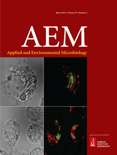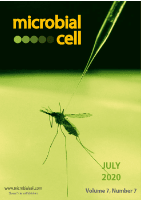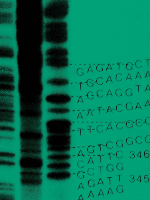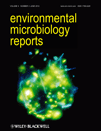
npj Biofilms and Microbiomes
Scope & Guideline
Innovating Research at the Intersection of Microbiology and Biotechnology
Introduction
Aims and Scopes
- Microbial Dynamics and Interactions:
The journal emphasizes the study of microbial interactions within biofilms and their ecological implications, exploring how these communities form, evolve, and function in various environments. - Health and Disease Associations:
Research often investigates the role of microbiomes in human health and disease, including gut microbiota's influence on metabolic disorders, immune responses, and disease susceptibility. - Environmental Microbiology:
The journal publishes studies on microbial communities in environmental contexts, including their roles in nutrient cycling, pollutant degradation, and ecosystem stability. - Innovative Therapeutic Approaches:
There is a focus on developing novel strategies for manipulating microbiomes and biofilms for therapeutic purposes, such as probiotic treatments, antimicrobial strategies, and bioengineering applications. - Technological Advancements in Microbial Research:
Research utilizing cutting-edge technologies such as metagenomics, proteomics, and bioinformatics to unravel the complexities of microbial communities and their functionalities.
Trending and Emerging
- Microbiome and Host Interactions:
There is an increasing focus on understanding how microbiomes interact with their hosts, influencing health outcomes, immune responses, and metabolic processes. - Machine Learning and AI in Microbiology:
The application of machine learning and artificial intelligence for analyzing microbiome data is on the rise, enabling more sophisticated modeling of microbial dynamics and interactions. - Environmental and Ecological Impacts of Microbiomes:
Research is expanding to explore the ecological roles of microbiomes in diverse environments, including their effects on ecosystem health, resilience, and climate change. - Therapeutic Manipulation of Microbiomes:
Innovations in microbiome manipulation, such as fecal microbiota transplantation and engineered probiotics, are emerging themes, reflecting a growing interest in therapeutic applications. - Biofilm Dynamics and Control Strategies:
There is a notable trend towards studying the dynamics of biofilm formation and persistence, particularly in relation to developing novel strategies for biofilm control in clinical and industrial settings.
Declining or Waning
- Traditional Antibiotic Resistance Studies:
Research focused solely on antibiotic resistance mechanisms in isolation is becoming less prevalent, as there is a growing emphasis on understanding the complex interactions within microbial communities that contribute to resistance. - Single-Species Biofilm Studies:
There is a noticeable decrease in studies examining single-species biofilms, as research increasingly focuses on multi-species interactions and their ecological consequences. - Basic Microbial Taxonomy:
Studies that primarily focus on cataloging microbial species without exploring their functional roles or interactions within ecosystems are becoming less common, reflecting a shift towards functional and ecological research.
Similar Journals

Bioscience of Microbiota Food and Health
Exploring the Intersection of Microbiota, Nutrition, and HealthBioscience of Microbiota Food and Health, an esteemed journal published by BMFH PRESS, serves as a pivotal platform for interdisciplinary research in the expanding fields of applied microbiology, food science, and gastroenterology. Since its inception in 2014, the journal has facilitated a critical exchange of scientific knowledge, promoting advancements in our understanding of microbiota's role in human health and nutrition. With its impressive 2023 category quartile rankings—Q2 in Applied Microbiology and Biotechnology, Food Science, and Gastroenterology—it stands out among its peers, appealing to researchers, professionals, and students alike. The journal does not follow an open-access model, which underscores its exclusivity while maintaining rigorous peer-review standards. Based in Japan, it provides a global forum for innovative studies that advance the field and enhance public health outcomes. As the journal converges into its next decade, it continues to uphold its commitment to disseminating high-quality research that bridges the gap between microbiota, food, and human health.

APPLIED AND ENVIRONMENTAL MICROBIOLOGY
Fostering Sustainable Practices Through Cutting-Edge ResearchApplied and Environmental Microbiology, published by the American Society for Microbiology, stands as a leading journal in the fields of applied microbiology and environmental science since its inception in 1976. With a prestigious Q1 quartile ranking across multiple categories including Applied Microbiology and Biotechnology, Ecology, and Food Science, this journal consistently disseminates high-impact research that drives innovation and advances our understanding of microbial interactions within our ecosystems and industries. As ranked by Scopus, it exhibits prominent rankings in various related fields, underscoring its critical role in shaping contemporary microbiological research. Researchers, professionals, and students alike can stay abreast of groundbreaking studies while contributing to a vast body of knowledge that spans diverse aspects of microbiology, biotechnology, and ecology, ultimately contributing to sustainable practices. Join the community of dedicated scholars and explore vital research findings that impact both environmental health and technological advancement.

Microbial Cell
Pioneering discoveries in biochemistry and molecular biology.Microbial Cell is a distinguished open-access journal published by SHARED SCIENCE PUBLISHERS OG, focusing on the dynamic fields of microbiology, biochemistry, and molecular biology. Since its establishment in 2014, Microbial Cell has been at the forefront of disseminating cutting-edge research essential for advancing our understanding of microbial functions and interactions. With a commendable impact factor and ranking in the top quartiles (Q1 and Q2) across several categories, including Applied Microbiology and Biotechnology and Parasitology, this journal serves as an invaluable resource for researchers, professionals, and students alike. It features a comprehensive scope that encompasses the latest findings in genetics, cell biology, and virology, facilitating the academic community's access to high-quality peer-reviewed work. Microbial Cell not only contributes to advancing microbial sciences but also fosters an inclusive platform for knowledge sharing and collaboration in the scientific community.

All Life
Shaping the Future of Life Science InquiryAll Life is a distinguished academic journal published by TAYLOR & FRANCIS LTD, based in the United Kingdom, focusing on the interdisciplinary realms of agricultural and biological sciences, biochemistry, genetics, and neuroscience. With the ISSN 2689-5293 and E-ISSN 2689-5307, this open-access journal aims to disseminate high-quality research from 2020 to 2024, facilitating a wider reach and impact across various fields. Notably, it holds a Q3 ranking in both Agricultural and Biological Sciences, as well as Biochemistry, Genetics and Molecular Biology, and a Q4 ranking in Neuroscience, reflecting its growing presence in these disciplines. All Life aims to foster collaboration among researchers, professionals, and students, encouraging innovative approaches in understanding life sciences. By delivering timely insights and thought-provoking discussions, the journal plays a crucial role in advancing knowledge and promoting interdisciplinary dialogue in the evolving landscape of life sciences research.

Cell Host & Microbe
Transforming Understanding of Microbial InfluenceCell Host & Microbe is a premier journal published by CELL PRESS, dedicated to advancing the field of host-microbe interactions and infectious diseases. With an impact factor reflecting its esteemed position among scholarly publications, this journal not only focuses on the intricacies of microbiology but also delves into critical areas such as Cancer Research, Immunology, and Molecular Biology, maintaining a distinguished Q1 ranking across several categories. Since its inception in 2007, Cell Host & Microbe has been at the forefront of disseminating high-quality research, providing invaluable insights for researchers, professionals, and students alike. The journal is committed to promoting understanding of the complex relationships between microbial entities and their hosts, filtering groundbreaking research from the top echelons. Located in the heart of Cambridge, MA, USA, this journal serves as an essential resource for anyone looking to deepen their knowledge in microbiology and its applications in health and disease.

BIOLOGY AND FERTILITY OF SOILS
Unlocking the Secrets of Soil Biology and FertilityBIOLOGY AND FERTILITY OF SOILS, published by Springer, is a leading international journal dedicated to advancing the field of soil science with a focus on the intersection of biological processes and fertility management. With its ISSN 0178-2762 and E-ISSN 1432-0789, this journal serves as a key resource for researchers and professionals alike, reflecting its esteemed status in the community, evidenced by its Q1 rankings in Agronomy and Crop Science, Microbiology, and Soil Science. Covering a broad range of topics from soil health to sustainable agricultural practices, the journal's significant impact factor underscores its critical role in driving innovative research in the domain. While not offering Open Access options, it features rigorous peer-reviewed research that spans decades, converging influential studies from 1985 to 2024. Located in Germany with offices in the United States, the journal maintains a strong international presence, providing insights that enhance the understanding and management of soil ecosystems crucial for sustainable agriculture. Researchers aiming to expand their knowledge on soil biology and fertility will find this journal an invaluable asset.

Microbial Genomics
Innovating Research Through Open AccessMicrobial Genomics, an esteemed journal published by the Microbiology Society, is a leading platform dedicated to the rapidly evolving field of microbial genomics. Since its transition to Open Access in 2016, this journal has consistently aimed to promote unprecedented transparency and accessibility in scientific research. Based in the United Kingdom, Microbial Genomics serves a diverse international audience, providing an invaluable resource for researchers, professionals, and students interested in genomics, microbiology, and related fields. With impressive quartile rankings in 2023, including Q1 status in Epidemiology, Genetics, and Microbiology, alongside strong performance in other categories, the journal is positioned at the forefront of academic discourse and innovation. This journal's commitment to excellence is not only reflected in its rigorous peer-review process but also in its dedication to showcasing groundbreaking research that informs current practices and shapes future trends in microbial science. As researchers explore the intricacies of microbial genomes, Microbial Genomics remains an essential resource fostering knowledge and collaboration in the scientific community.

ISME Communications
Unveiling Microbial Mysteries for Ecosystem SustainabilityISME Communications is an esteemed journal dedicated to advancing the field of environmental microbiology and its multifaceted intersections with ecology, biogeochemistry, and biotechnology. Published by SpringerNature, this journal aims to disseminate cutting-edge research and innovative insights that address pressing global challenges through interdisciplinary approaches. With a commitment to open access, it provides a platform for researchers, professionals, and students to share their findings widely, fostering collaboration and knowledge exchange. Although the journal is relatively new, its potential for impactful contributions is substantial, making it an essential resource for anyone interested in the microbial processes that underpin ecosystem functioning and sustainability. The journal not only prioritizes the rigorous peer-review process but also supports the academic community's pursuit of excellence in environmental science.

Environmental Microbiology Reports
Exploring the Microbial World of Environmental InteractionsEnvironmental Microbiology Reports, published by WILEY, is a prestigious journal dedicated to the field of environmental microbiology, exploring the intricate interactions between microorganisms and their environments. With an ISSN of 1758-2229, this journal has established itself as a crucial resource for researchers, professionals, and students interested in the latest advancements and applications in microbial ecology, soil science, and environmental sustainability. Since its inception in 2009, the journal has grown in impact and reputation, proudly ranked in the Q1 category for both Agricultural and Biological Sciences and Ecology, Evolution, Behavior and Systematics as of 2023. Notably, it occupies the 17th position out of 193 in its subcategory based on Scopus rankings, showcasing its significance within the field. Although it does not currently offer open access options, the high-quality research published in this journal continues to contribute significantly to the understanding of microbial roles in environmental processes, emphasizing the vital role of microbes in maintaining ecosystem health and promoting sustainable practices.

APPLIED BIOCHEMISTRY AND MICROBIOLOGY
Pioneering Discoveries in Applied Biological Sciences.Applied Biochemistry and Microbiology is an esteemed journal published by Pleiades Publishing Inc, focusing on the intricate intersections of biochemistry and microbiology. Established in 1970, with a commitment to advancing scientific knowledge, this journal serves as a vital platform for disseminating innovative research findings in applied microbiology, biotechnology, and biochemistry. With its ISSN 0003-6838 and E-ISSN 1608-3024, the journal operates from its base in New York, USA. As a recognized publication in the field, Applied Biochemistry and Microbiology holds a Category Quartile ranking of Q3 in Applied Microbiology and Biotechnology and Q4 in Biochemistry, reflecting its significant contributions and relevance. Although currently not open access, the journal is indexed in Scopus, with respectable rankings that highlight its impact in the community, making it a pivotal resource for researchers and professionals dedicated to the realms of biochemistry and microbiology.